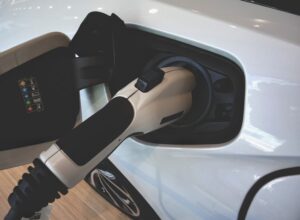Research finds new cooling method improves EV battery performance
Research has discovered electric vehicle (EV) batteries can be enhanced by installing a blood-vessel like cooling network which prevents malfunctions.
Scientists from Drexel University experimented by inserting the cooling system into the packaging of carbon-fibre based EV batteries and found it vastly improved performance.
The method balanced performance-enhancing factors, such as battery capacity, against problematic variables like weight and thermal activity, providing the best battery package specifications for EV’s.
In recent months there have been reports of EV battery malfunctions, with some even resulting in fatal fires in India and electric vehicle recalls by the manufacturers.
Many companies are turning to solid batteries – thin, carbon-fibre versions of larger lithium-ion batteries – as these can cut the overall weight of the vehicle and improve mileage efficiency.

However, these structural, ‘mass-less’ batteries often generate more heat as the battery discharges energy, as electrons are forced to move slower than in lithium-ion batteries.
‘While structural battery composites are a promising technology for reducing weight in electrical vehicles, their design could certainly benefit from the addition of a thermal-management system,’ said Ahmad Najafi, PhD, an assistant professor in the College of Engineering. ‘Not only could this improve the range of the EV, but it would also greatly reduce the chances of a thermal runaway reaction.’
The group of researchers have based the method on vascular systems found in humans and animals, installing ‘microvascular’ networks into batteries.
This system can calculate the best pattern, size and number of microvascular channels to dissipate heat from the batteries and optimise flow efficiency of the coolant.
‘These composites function something like a radiator in an internal combustion engine vehicle,’ Dr. Najafi said. ‘The coolant draws in the heat and pulls it away from the battery composite as it moves through the network of microchannels.’
The microvascular networks can stabilise the temperature of structural batteries and extend the time and power range in which they can be used.
Computer models showed this model improved the driving range of a Tesla model S by 23%.
‘While we know that every bit of weight saving can help improve the performance of an EV, thermal management can be just as important – perhaps more, when it comes to making people feel comfortable driving them,’ Dr. Najafi said. ‘Our system strives to integrate improvements in both of these areas, which could play an important role in the progress of electric vehicles.’
Photo by Possessed Photography







 Network
Network